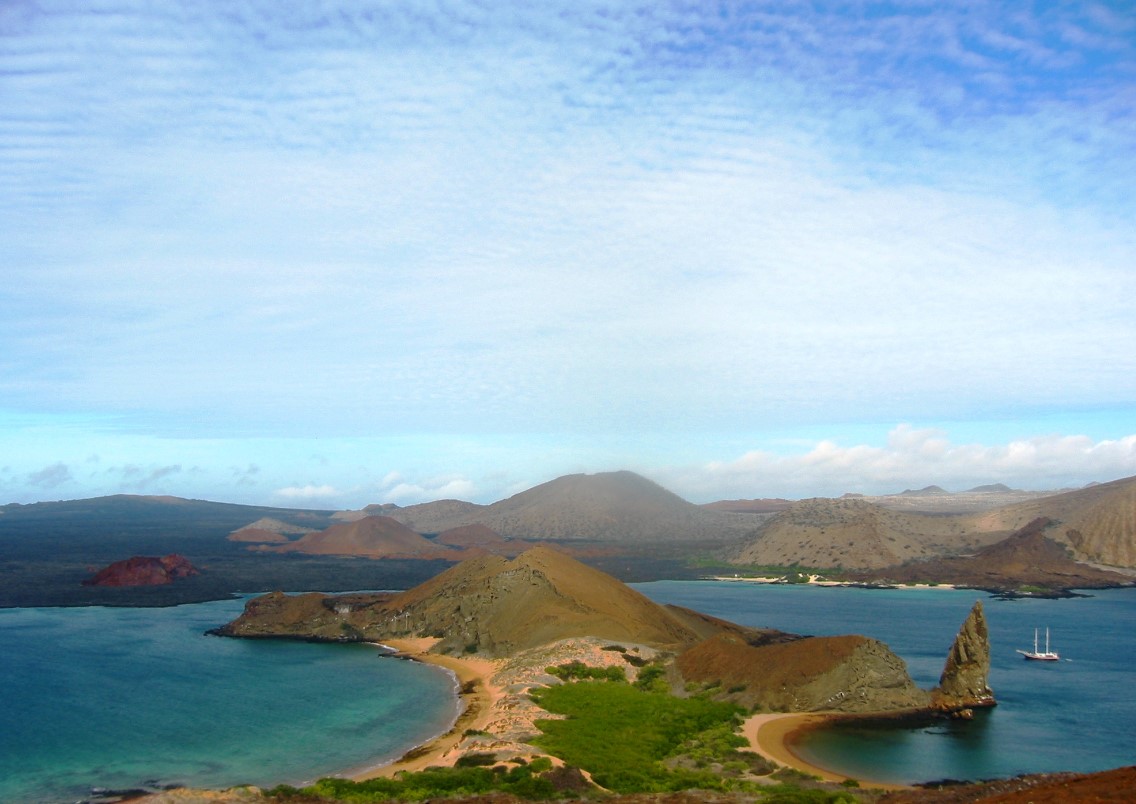Ecuador has announced that it will double the entry fee to the Galápagos Islands, a UNESCO World Heritage Site, for foreign visitors from August 1, 2024. The fee, which has remained unchanged for over 25 years, will increase from $100 to $200 per adult, while the fee for Ecuadorian nationals will rise from $6 to $30. The decision aims to generate more funds for the protection and preservation of the unique and fragile ecosystem of the islands, as well as to improve the infrastructure and services for the local population and the tourists.
The Galápagos Islands: A Natural Wonder and a Tourist Attraction
The Galápagos Islands are a group of 19 volcanic islands and dozens of islets and rocks, located about 1,000 km off the coast of Ecuador in the Pacific Ocean. The islands are famous for their biodiversity and endemic species, such as the giant tortoises, the marine iguanas, the blue-footed boobies, and the Galápagos penguins. The islands are also known as the place where Charles Darwin developed his theory of evolution by natural selection, after observing the variations among the animals and plants.
The Galápagos Islands are one of the most popular tourist destinations in Ecuador and South America, attracting over 270,000 visitors in 2019. The islands offer a variety of activities and attractions, such as wildlife watching, snorkeling, diving, hiking, kayaking, and cruising. The islands are also home to about 30,000 residents, who mainly depend on tourism and fishing for their livelihoods.

The Entry Fee: A Source of Revenue and a Tool for Regulation
The entry fee to the Galápagos Islands was first introduced in 1993, as a way of generating revenue for the conservation and management of the islands, as well as for the development and welfare of the local communities. The fee is collected by the Galápagos National Park Authority (GNPA), which is the entity responsible for the administration and protection of the natural and cultural heritage of the islands.
According to the GNPA, the fee is distributed as follows:
- 50% goes to the GNPA for conservation, research, monitoring, and environmental education programs.
- 20% goes to the Galápagos Municipalities for public works, health, education, and sanitation projects.
- 10% goes to the Galápagos Provincial Council for the promotion and coordination of the sustainable development of the islands.
- 10% goes to the Galápagos Marine Reserve for the conservation and management of the marine resources and ecosystems.
- 5% goes to the Galápagos National Institute for the control and prevention of invasive species.
- 5% goes to the Ministry of Tourism for the promotion and regulation of tourism in the islands.
The entry fee also serves as a tool for regulating the number and profile of the visitors to the islands, as well as for ensuring their compliance with the rules and regulations of the GNPA. The fee is different for different categories of visitors, such as foreigners, nationals, residents, students, children, and seniors. The fee also varies depending on the length and purpose of the visit, such as tourism, transit, research, or work. The fee is paid either online or upon arrival at the airports of Baltra or San Cristóbal, and is valid for up to 14 days.
The Fee Increase: A Response to the Challenges and Opportunities
The decision to increase the entry fee to the Galápagos Islands was made by the Ecuadorian government, in consultation with the GNPA, the local authorities, and the tourism sector. The decision was based on several factors, such as:
- The inflation and the devaluation of the US dollar, which is the official currency of Ecuador, since 1993. The GNPA estimates that the current fee of $100 has lost about 60% of its purchasing power over the years.
- The rising costs and demands of the conservation and management of the islands, especially in the face of the threats posed by climate change, invasive species, illegal fishing, and pollution. The GNPA states that the current fee covers only 30% of its annual budget, and that the rest comes from donations and external sources.
- The need to improve the infrastructure and services of the islands, such as water, electricity, sewage, health, education, and transportation, for the benefit of the local population and the tourists. The GNPA claims that the current fee is insufficient to meet the growing and diverse needs of the islands.
- The opportunity to promote a more sustainable and responsible tourism model, that respects the carrying capacity and the environmental limits of the islands, and that contributes to the conservation and development of the islands. The GNPA hopes that the fee increase will help to reduce the pressure and the impact of mass tourism, and to attract more quality and conscious visitors.
The fee increase is expected to generate an additional $40 million per year for the islands, which will be invested in various projects and programs that aim to enhance the protection and preservation of the natural and cultural heritage of the islands, as well as to improve the quality of life and the well-being of the local population and the tourists.
The Fee Increase: A Controversial and Challenging Decision
The announcement of the fee increase to the Galápagos Islands has been met with mixed reactions from different stakeholders and sectors. Some of the opinions and arguments are:
- The supporters of the fee increase argue that it is a necessary and justified measure, that reflects the true value and the costs of visiting and maintaining the islands, and that will benefit the conservation and development of the islands in the long term. They also point out that the fee increase is still lower than the fees charged by other comparable destinations, such as the Komodo National Park in Indonesia, which charges $1,000 per visit.
- The opponents of the fee increase contend that it is an excessive and unfair burden, that will discourage and exclude many potential and loyal visitors, especially from Ecuador and Latin America, and that will harm the tourism industry and the economy of the islands in the short term. They also question the transparency and the efficiency of the fee collection and distribution, and the accountability and the participation of the stakeholders in the decision-making process.
- The neutral or undecided parties suggest that the fee increase should be implemented gradually and flexibly, taking into account the different categories and circumstances of the visitors, and the impacts and the feedback of the measure. They also propose that the fee increase should be accompanied by other actions and incentives, such as improving the quality and the diversity of the tourism products and services, enhancing the communication and the education of the visitors, and strengthening the coordination and the cooperation of the actors involved.
The fee increase to the Galápagos Islands is a controversial and challenging decision, that reflects the complexity and the sensitivity of the issues and the interests at stake. The decision also poses a dilemma and a question for the future of the islands: How to balance the conservation and the development of the islands, and how to ensure the sustainability and the responsibility of the tourism in the islands?








